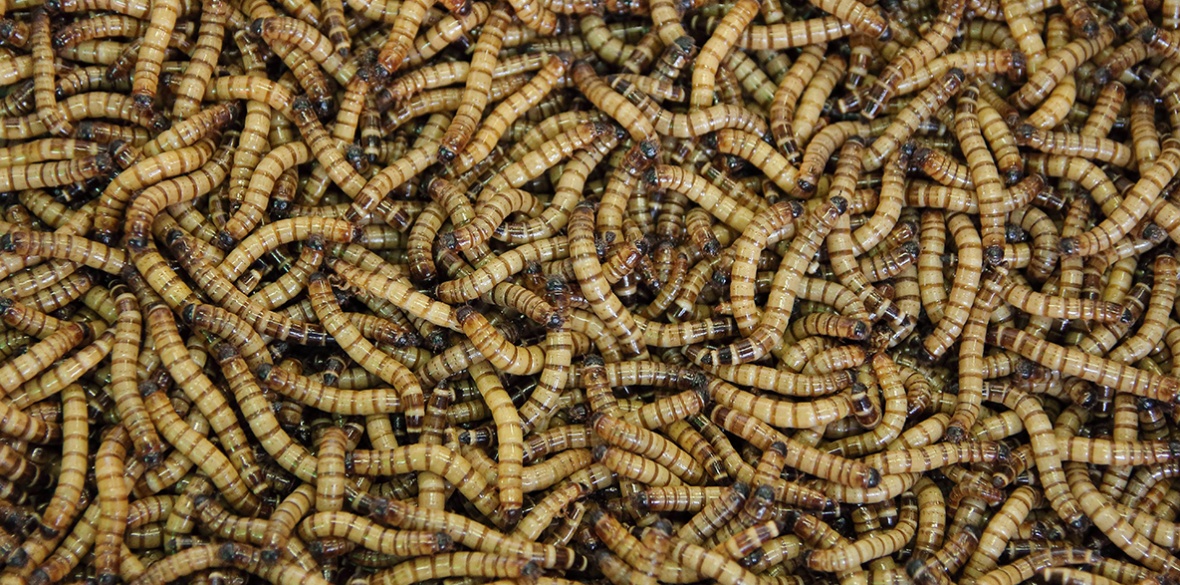This is the last article you can read this month
You can read more article this month
You can read more articles this month
Sorry your limit is up for this month
Reset on:
Please help support the Morning Star by subscribing here
WE HAD a small domestic crisis, and a bit of a mystery, at Chez Frosty back in the days just before the heat wave.
We finished eating supper at about 9pm and cleared up. As always, we left the room and its wooden floor immaculate.
When my wife Ann returned to the kitchen at about midnight, she felt a strange sensation under her bare feet.
In the middle of the floor was a 1m by 2m patch of thousands of live wriggling maggots in a layer at least 2.5cm thick.
Although we had had a bit of a fly problem which we put down to the hot weather, we just could not discover where the maggots had come from.
We searched everywhere — including under the fridge — but to no avail. There was simply not a clue where they had come from and why they had chosen to invade our clean kitchen.
I can only think it was a new public relations firm that maggots have recently employed trying to get a story in that finest of daily newspapers, the Morning Star. Well, it has worked for the maggot marketing board — here I am with a whole column about maggots.
(I would warn the maggots about public relations agencies and advisers. Our soon-to-be-replaced Prime Minister got through PR agencies and advisers by the dozen without any visible success — but that is another story).
Back to our maggot invasion. We shovelled up wriggling invaders and carried them out to the garden where we despatched them with a combination of foot stamping and bleach (whoops! There go some of my environmental credentials — but maggots are not exactly a threatened species).
I suffer from an unusual medical condition related to my type 2 diabetes: an auto-amputated fourth small toe. That’s a scientific phrase which means the end of my toe dropped off.
The stump of the toe is hard to heal. I often have a tiny ulcer where the end of the toe used to be. I take long-term antibiotics and it usually heals, but very slowly.
I recently had a review of my case with my brilliant hot-shot podiatrist. He mentioned a couple of alternative treatments for my toe, one very old, one very new.
The new one involves boring into the remaining stump of bone and packing the resulting cavity with anti-biotic putty. No, I had never heard of anti-biotic putty either.
The much older treatment — yes, you guessed it — uses maggots. It is centuries old, going back as far as the ancient Egyptians.
Many well-reported cases come from the American civil war. In one case two soldiers had terrible wounds from artillery fire. It was three days before their bodies were being cleared from the battlefield.
Amazingly they were both alive but all their wounds were bursting with live maggots. When they arrived at the field hospital doctors could not believe their eyes. The maggots had kept all the wounds infection free and there was no sign of sepsis or gangrene. Both soldiers recovered fully.
Maggots strip dead, necrotic flesh and infectious bacteria away from a wound or ulcer. Amazingly, the maggots of the green bottle fly only eat dead tissue and bacteria. They never eat healthy live tissue. Actually, all this talk of eating is a bit misleading. Maggots have no real mouth parts and certainly no teeth.
What they do is spit their saliva — rich with tissue-dissolving enzymes — into the wound or ulcer. The enzymes get to work and when all is liquid the maggot drinks the resulting cocktail. The whole treatment takes just a few days but might need to be repeated.
It was always a fairly common treatment for non-healing wounds such as pressure ulcers, neuropathic foot ulcers, and other chronic injuries until the 1940s, when penicillin changed the world of medicine forever.
The rather unappetising maggot treatment would often put patients off, and not just patients. Many medical staff simply couldn’t stand working with live maggots.
Nowadays maggot therapy is rare and expensive but is still used in some hard to heal cases. Modern-day maggots are usually applied in tea-bag like containers but even that has not improved the image of the maggot.
Me? Well after much umming and ahing with my podiatrist I’m sticking with the good old antibiotic tablets three times a day — thank you, Alexander Fleming.
Now my last — and truly topical — maggot story: supermarket chain Morrisons has announced the introduction of planet-friendly eggs. They will come from farms where hens are fed a soya-free diet that includes maggots.
Morrisons carefully avoid the word maggot and call them “insects” in their press releases. These discreetly named “insects” will form part of a new chicken diet, aimed at cutting emissions linked to soya-based feed.
Cutting out soya avoids the emissions associated with large-scale deforestation to grow the crop in places such as Brazil — and transport pollution from shipping the feed.
The bug farms where the maggots come from will be fuelled by food waste from the retailer’s bakery, fruit and vegetable sites. These changes mean Morrisons will be the first supermarket to offer consumers carbon-neutral eggs.
Sophie Throup, head of agriculture at Morrisons, told us: “This is our first carbon-neutral product and there will be many more to come.
“We know our customers consider the environmental impact of the food they eat and want affordable zero-emission produce.”
“Eggs are a regular weekly purchase for most households and so we are thrilled that, after 18 months of hard work with our farmers, these eggs are finally hitting our shelves.”
Morrisons’s new insect-fed eggs will initially be available in 50 Yorkshire stores and a lower environmental impact store in Little Clacton, Essex. They will cost of 30p each or £1.50 for six.
So well done, Morrisons and maggots. Next Friday I’ll try to give you a Ramblings a bit easier to stomach.
Finally, let’s take a look at the lucilia sericata. That is the scientific name for all four stages of the greenbottle fly. The four stages include adult, egg, larva or maggot and pupa.
Each female can lay nine to 10 batches of 2,000-3,000 eggs in just three weeks. The number of eggs that a female can develop depends greatly on the temperature.
Eggs are usually laid on the cavities and crevices of moist decaying organisms. Lucilia sericata like to lay their eggs in an area that is usually exposed to light.
Maggots then hatch from the eggs and attach themselves to the organism. After about four to nine days the maggots are done with development, and enter the pre-pupa stage.
They burrow themselves into soil and then pupate. In this stage, the maggot pupa is encompassed in a hardened shell where it will moult and gain wings.
They are motionless, do not eat, and cannot protect themselves. An average pupa stage will last about a week. Some flies can stay in the pupa stage for several months because of low soil temperatures.
An adult fly will then escape from its pupa. At first the fly will be soft and won’t have its eponymous bright green colour. It will take the body of the fly 48 hours to harden, when it will finally display colour and have fully functional wings.
Mating activity occurs anywhere from a week after emergence. Then the life cycle will start all over again — just hopefully not on your kitchen floor.











